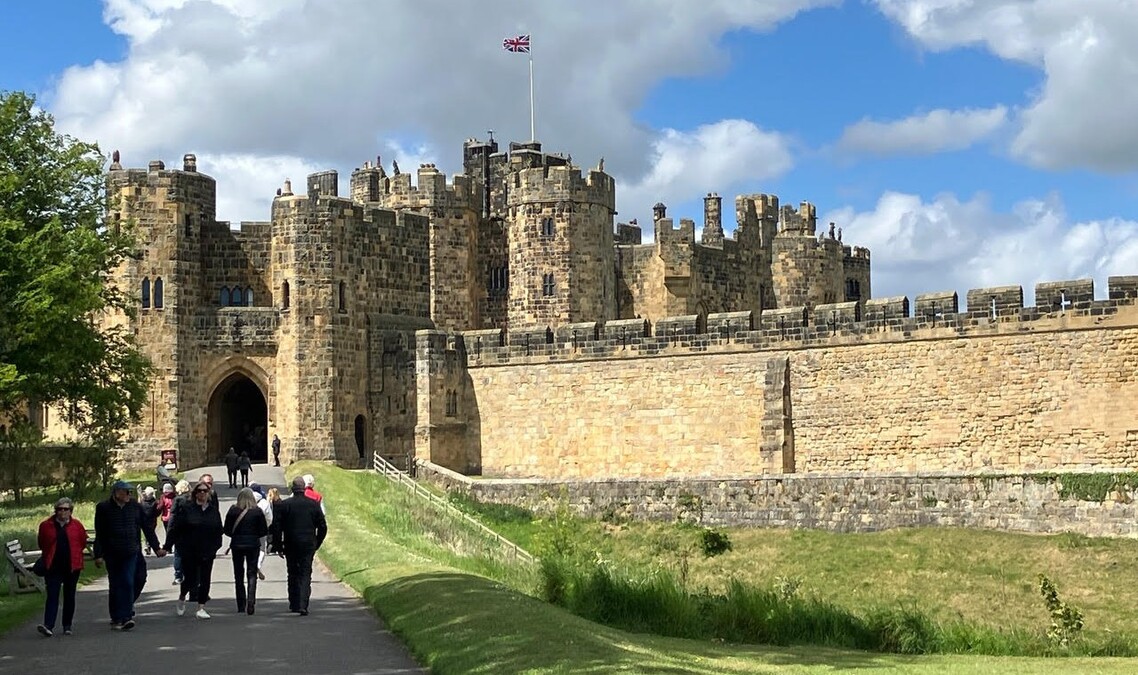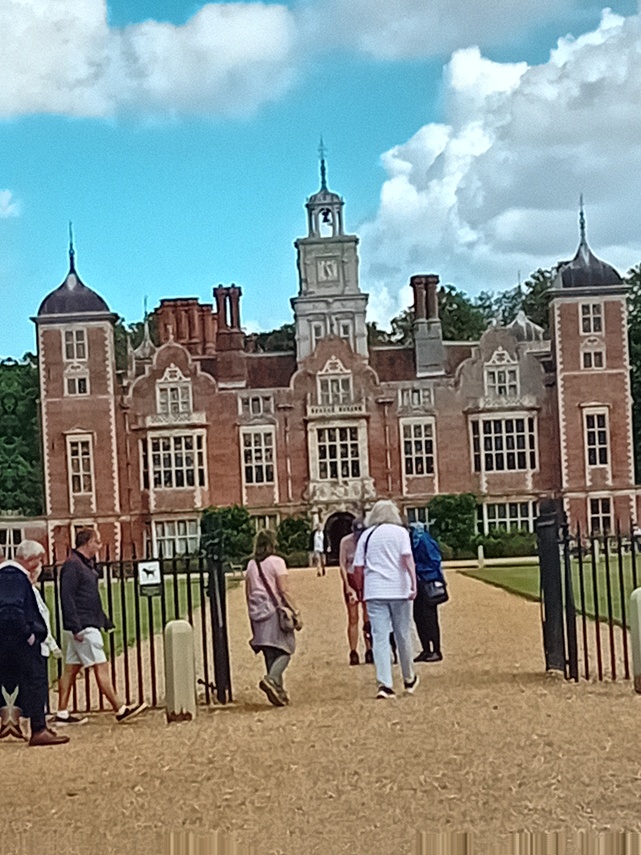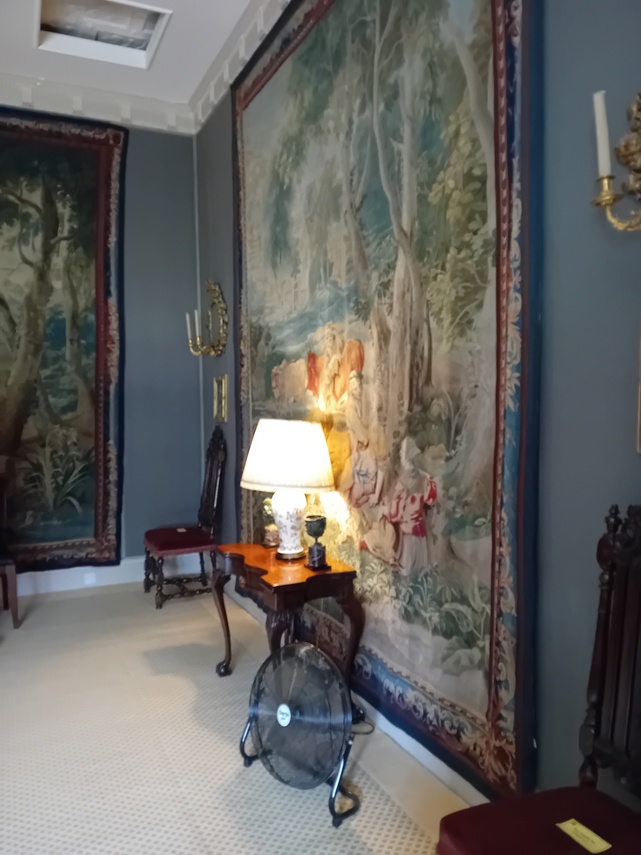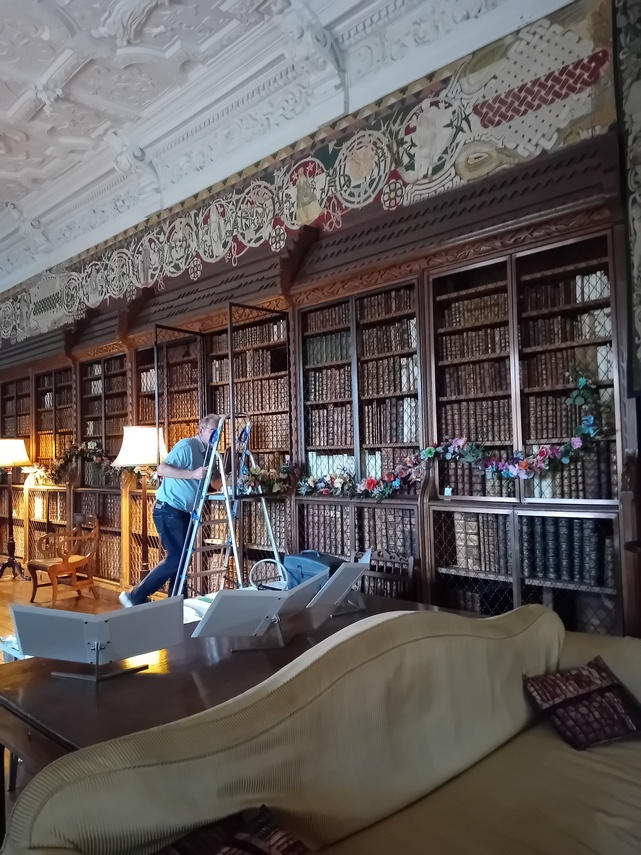Ray and other members and friends of the association enjoyed a holiday to the North East of England in May 2025.
29 of us shared a six-day holiday in May to discover some of the gems of North East England. On arrival at Hartlepool the HMS Trincomalee, a splendid restored 1817 Royal Navy Leda class sailing frigate, was in the dock for us to explore and learn about life on board for all ranks.
Our sea front hotel in Seaburn greeted us with a sunny walk on the promenade before our evening meal.
Beamish open-air museum has dismantled buildings from various venues faithfully re-built to form a town. It is peopled by staff dressed and behaving in a historically appropriate manner for the late 1800s / early 1900s. The cinema had a short film running and almost everyone stood up for God Save the Queen at the end. Period buses and trams provided transport around the large site.
At the National Glass Centre in Sunderland we witnessed magic. A glowing blob of molten glass was turned into an elegant bowl with an integral coloured geometric pattern. The museum at the Centre contained a very wide variety of beautiful glass items.
We travelled through the glorious Nothumbrian countryside to Wallington Hall (NT). Some of us started the visit with a woodland walk that continued into extensive stunning gardens. Entering the huge and somewhat austere Hall revealed the beauty of the property. Most striking was the former central courtyard, which was roofed over creating a 2-storey space complete with Pre-Raphaelite paintings by lesser-known artists. En route to the hotel we stopped for a traditional afternoon cream tea.
In Newcastle our Blue Badge Guide rightly enthused about the city showing us the equally appealing historic and modern areas of the city. Before our tour we crossed the Tyne to get an overview of the city from the Baltic Gallery. In the foreground was the ‘Eyelid Bridge’ and beyond was the ‘Tyne Bridge; where Kittiwakes adorn the structure requiring the paths below to be swept twice a day. Rows of the same flock stood on building ledges at our viewpoint. Walking round the city there were many pedestrianised streets and we were spoilt for choice for lunch with eating places providing cuisine from a dozen or more countries.
Seaton Delaval Hall (NT) has the appearance of a normal large country house but the Georgian Delaval family who lived there were far from normal. The visitors’ wing had rooms decorated to surprise their guests. The most extreme was the upside down room: furniture was fixed to the ceiling. Guests were also involved in games and a wide range of entertainments. It seemed difficult to find the exit from that wing, suggesting another ploy to trick visitors.
Alnwick Castle was imposing and the gardens had numerous beautiful water features, some demonstrating the science of hydrology. Inside the castle walls we were able to witness visitors being taught how to fly on a broomstick!
The return home included a visit to Thirsk including the James Herriot Museum. Altogether it was a very good holiday.
In September we paid a visit to Blickling Hall in Norfolk
Blickling Hall is a Jacobean stately home situated in 5,000 acres of parkland in a loop of the River Bure, near the village of Blickling north of Aylsham in Norfolk, England. The mansion was built on the ruins of a Tudor building for Sir Henry Hobart from 1616 and designed by Robert Lyminge.






